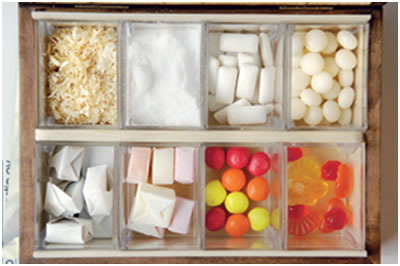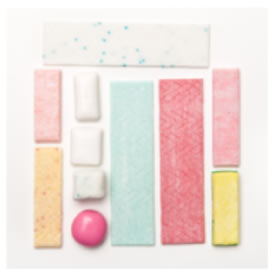Xylitol

Xylitol and xylitol-based products
Xylitol is a “tooth-friendly”, naturally occuring, nonfermentable sugar alcohol and a low-calorie sweetener that inhibits the growth of mutans streptococci, cariogenic microorganisms. The American Academy of Pediatric Dentistry (AAPD) recognizes the benefits of xylitol on the oral health of infants, children, adolescents, and persons with special health care needs.
Xylitol is derived mainly from birch and other hardwood trees. Some of the best sources are fibers, fruits, berries, mushrooms, lettuce and corn cobs. One cup of raspberries contains less than one gram on xylitol.
Most dietary sugars are fermented by plaque microorganisms, favour the establishment of a cariogenic microflora and contribute to bacterial virulence. The vast majority of plaque bacteria, however, are incapable of fermenting xylitol into cariogenic acid end-products. Accumulated intracellularly as a non-metabolisable metabolite by mutans streptococci, xylitol inhibits its growth in vitro and reduces the amount of plaque and the number of mutans streptococci in both the plaque and saliva of xylitol consumers.
Habitual xylitol consumption by mothers was associated with a statistically significant reduction of the probability of mother-child transmission of mutans streptococci assessed at two years of age. The effect was superior to that obtained with either chlorhexidine or fluoride varnish treatments performed as single applications at six-month intervals.
The use of xylitol gum by mothers (2-3times per day) starting at birth and until the child was 3 years old, has proven to reduce cavities up to 70% by the time the child was 5 years old.

Chewing gums with xylitol
Studies using xylitol as either a sugar substitute or a small dietary addition have demonstrated a dramatic reduction in new tooth decay, along with reversal of existing dental caries. Xylitol effect is long-lasting and possibly permanent. Low decay rates persist even years after the trials have been completed.
Commercial xylitol-containing products may be used to help control rampant decay in primary dentition. Studies of schoolchildren in Belize and Estonia, along with data from the University of Washington, indicate that xylitol gum, candy, ice pops, cookies, puddings, etc., in combination with other dental therapies, are associated with the arrest of carious lesions. A prospective trial in Finland has demonstrated that children of mothers treated with xylitol had lower levels of S. mutans than children of mothers treated with chlorhexidine or fluoride varnish.
Studies suggest xylitol intake that consistently produces positive results ranged from 6 to 10 grams per day, divided into 3-7 consumption periods. Higher results did not result in greater reduction and may lead to diminishing results. Similarly consumption frequency of less than 3 times per day showed no effect.
Sources
McDonald RE, Avery DR, Stookey GK, Chin JR, Kowolik JE. Dental caries in the child and adolescent In: Dean JA, Avery DR, McDonald RE. Dentistry for the child and adolescent. St. Louis, Mosby Elsevier, 9th ed., 2011, p:177-204.
Lynch H, Milgrom P. Xylitol and dental caries: an overview for clinicians. J Calif Dent Assoc. 2003 Mar;31(3):205-9
Trahan L. Xylitol: a review of its action on mutans streptococci and dental plaque--its clinical significance. International Dental Journal 1995, 45(1 Suppl 1):77-92]
Söderling E, Isokangas P, Pienihäkkinen K, Tenovuo J. Influence of Maternal Xylitol Consumption on Acquisition of Mutans Streptococci by Infants. J Dent Res, 79: 882-887, 2000.
Isokangas P, Söderling E, Pienihäkkinen K, Alanen P. Occurrence of Dental Decay in Children after Maternal Consumption of Xylitol Chewing Gum, a Follow-up from 0 to 5 Years of Age. J Dent Res, 79 (11): 1885-1889, 2000.
http://www.utu.fi/en/research/areas/xylitol_tooth_friendly_sugar.html





